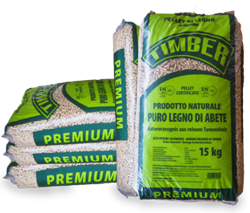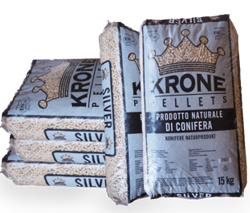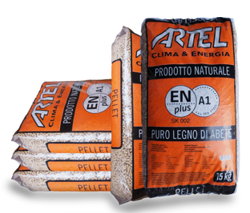The pellet is a fuel that does not damage natural resources because it is made from the waste of natural wood: It is obtained by the exploitation of unused wood and therefore the felling of new trees is not required what protects our forests.

Pellets production
Krone pellets are made from pure wood sawdust by pressing them under high pressure at high temperature into short sticks. They are the opposite of all fuels produced from oil and do not contain toxic substances, dangerous for man and the environment. Modern production processes make it possible to produce a 100% pure product, free of adhesives, dyes and other chemical additives. This guarantees that emissions are minimally harmful to man and the environment.
How to recognize quality pellets?
- They are cylindrical in shape, homogeneous in composition, the surface is smooth due to the absence of adhesives.
- The packaging prevents the penetration of moisture, which guarantees their high heating value.
- They do not crumble, so they contain only a negligible amount of pellet dust.
- They are certified.
Quality A pellets parameters
- Diameter: 6 mm
- Length: up to 30 m
- Weight: 600-650 kg/m3
- Residual ash: 0,56%
- Calorific value: 5,0 kWh/kg
- Humidity: < 8%
Advantages of pellets
- Handling during transport: packed in practical bags of 15 kg.
- Simple storage: there is no need for a dedicated storage room or stacking log.
- Optimization of consumption: the possibility of regulating the fuel supply and the ambient temperature to be heated enables savings in consumption;
- Waste prevention: automatic and programmable oven start-up (if installed), allows to maintain a minimum temperature value in the absence.
| Natural gas | Propane Butane | Diesel fuel | Pellets | |
|---|---|---|---|---|
| Output power (kcal / h - KW) | 10000 – 11.63 | 10000 – 11.63 | 10000 – 11.63 | 10000 – 11.63 |
| Calorific value | KCAL/M3 8130 | KCAL/M3 21032 | KCAL/M3 8517 | KCAL/M3 3390 |
| Consumption | M3/h 1.37 | Kg/h 0.53 | Kg/h 1.30 | Kg/h 4.54 |
Thermal output is the heat produced by certain types of fuels (indicative values).




